Honey Oatmeal Rolls: Worth Getting Out Your Bread Machine
Sneak Preview: These Honey Oatmeal Rolls are worth the trouble to dig out your bread machine. Mix them on the DOUGH cycle, shape them by hand, and bake them in your oven for the best texture, crust, and taste.
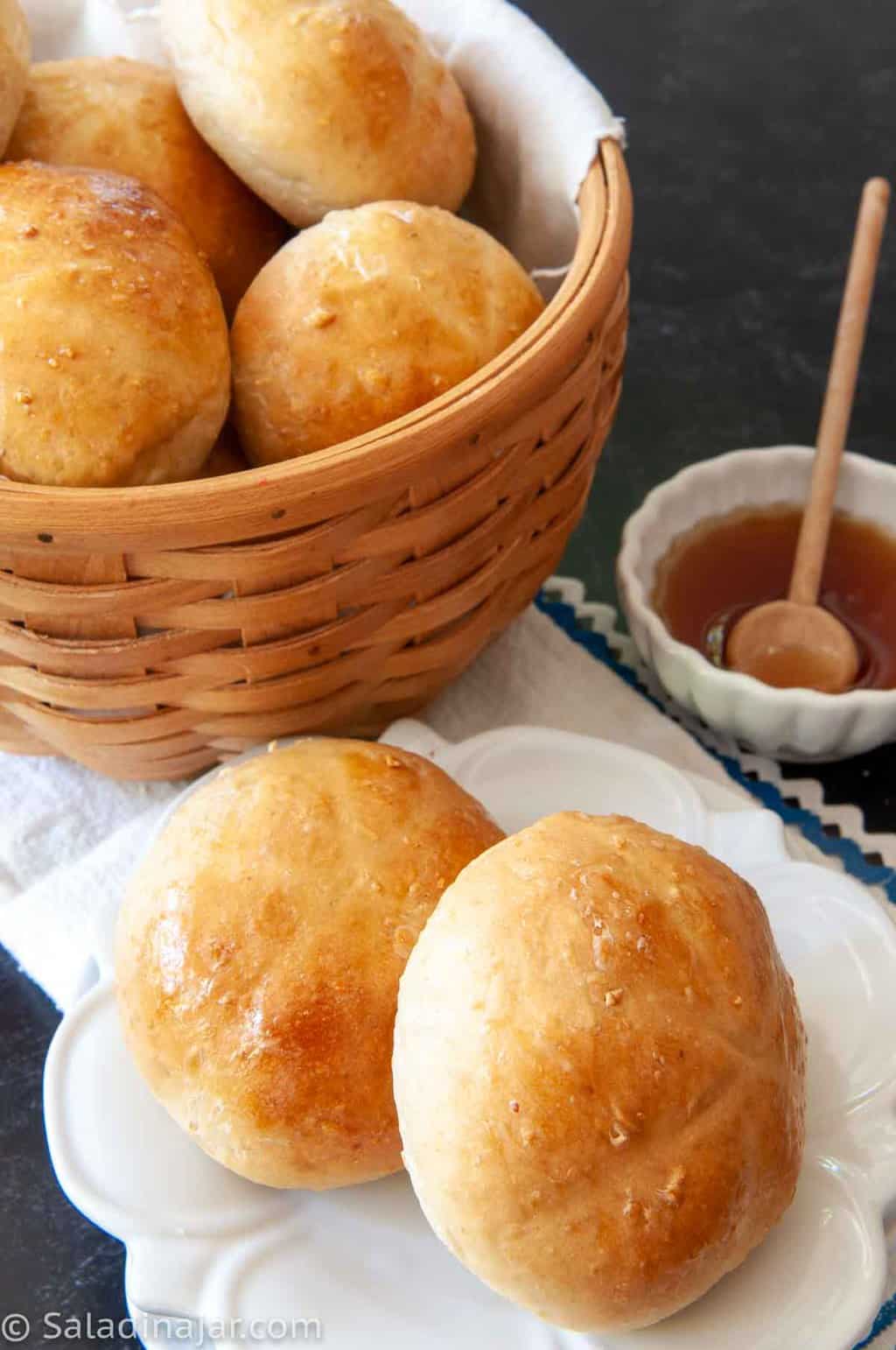
As an Amazon Associate, I earn from qualifying purchases.
Wait until you smell these homemade Honey Oatmeal Rolls (aka Oat Rolls) with honey baking in your kitchen! The heady fragrance of yeast will make your mouth water.
Five Reasons Why These Rolls Are Worth the Trouble
- When you bite into them, you’ll get a fluffy roll with chewy bits of oatmeal and the sweetness of honey.
- The texture is rather close and uniform but soft.
- The crust is rustic because of the oatmeal bits, but the shiny egg glaze adds sophistication.
- These rolls make good buns for chicken salad, sloppy joes, or, my favorite, a BLT. Make them smaller for slider buns.
- The directions are for a bread machine because it produces the best bread. But you can make it with a stand mixer or by hand. See the recipe notes for details.
Happy Bakers Speak Up
“Love these. I made them two days ago with maple syrup instead of honey. They are still soft. Thank you for this recipe. It’s a keeper. I tried to give it 5 stars ⭐️!”—LOIS
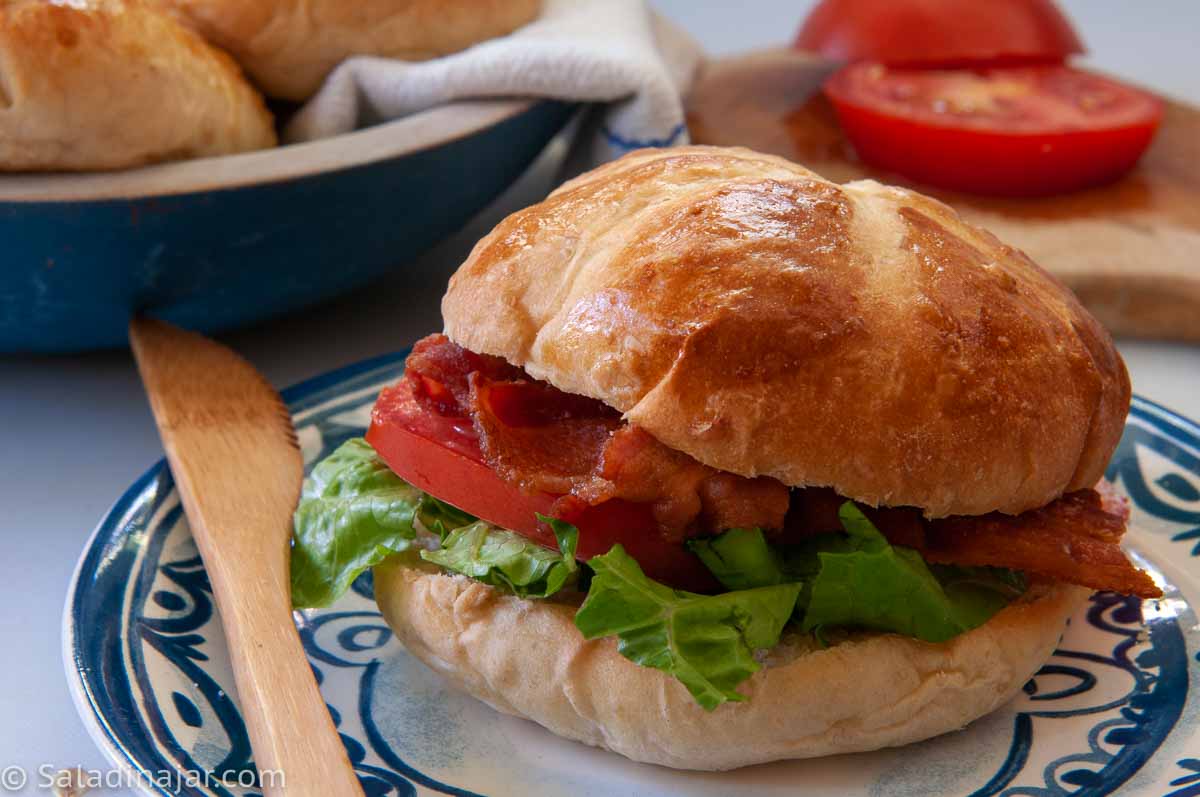
I like the markings on top. If you want deeper indentations, use the handle of a small wooden spoon to press down the dough in a decorative design.
Ingredients and Substitutions
- FLOUR: Substitute unbleached all-purpose flour if you don’t have bread flour. If you do that, I highly recommend adding vital wheat gluten.
- VITAL WHEAT GLUTEN: These rolls can be slow risers. Adding one tablespoon of vital wheat gluten will speed up the rising process and make them a bit softer and lighter in texture. You can leave this out, but allow extra time for the rolls to rise.
- OATMEAL: Old-fashioned rolled oats are better in this recipe. They add some chew. You could substitute the quick-cooking variety if you prefer. One way to intensify oatmeal’s sweet and nutty flavor is to toast it first. Do this before adding it to the bread machine pan.
- YEAST: Instant yeast or bread-machine yeast works best in a bread machine. You can substitute active-dry yeast; see the recipe notes for details.
- HONEY: The recipe specifies 1/4 cup, but you could cut the amount in half if you don’t want as much sweetness in your dinner rolls.
📌Kitchen Tips📌
- This is not a big deal. But I wanted you to see what happens when you get slap-happy with the glaze since I had a picture.
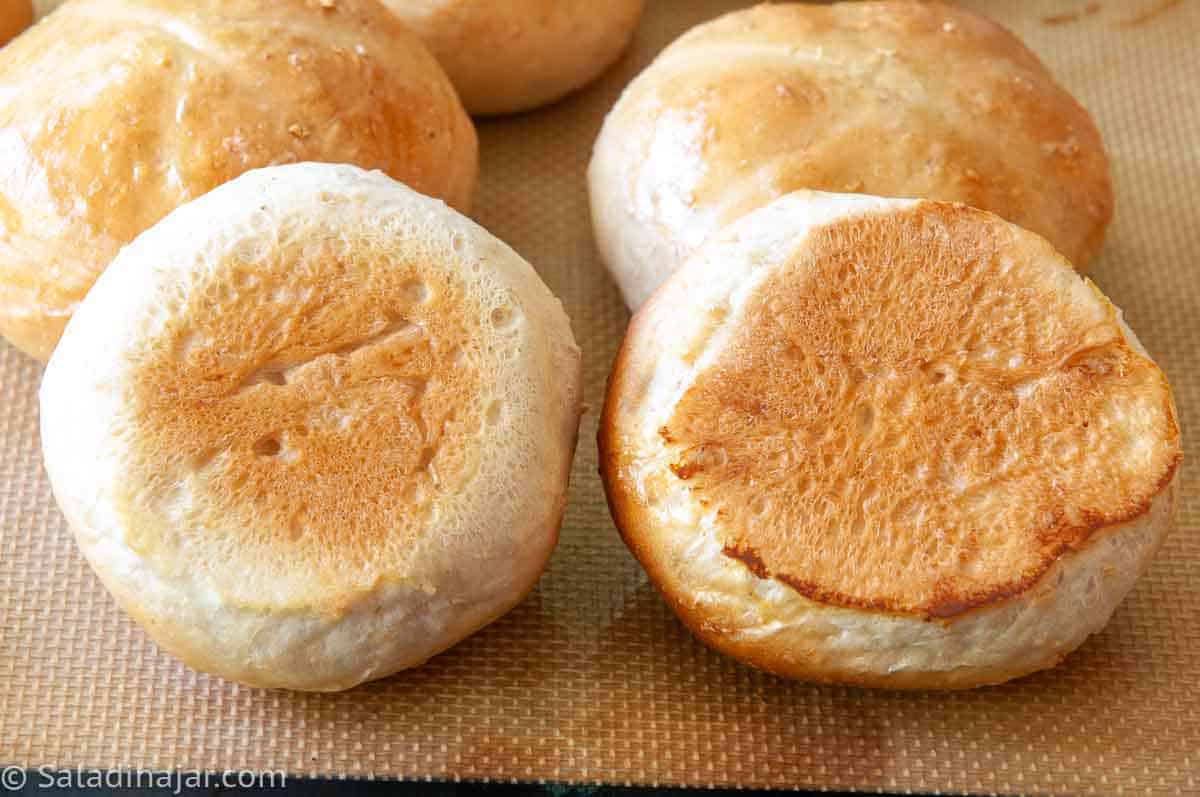
The roll on the right had some excess glaze that dripped and gathered around the bottom. Not all that appealing. However, it didn’t keep me from eating that roll.
2. Apply the glaze after making the design on top of the rolls if you want it to be more prominent.
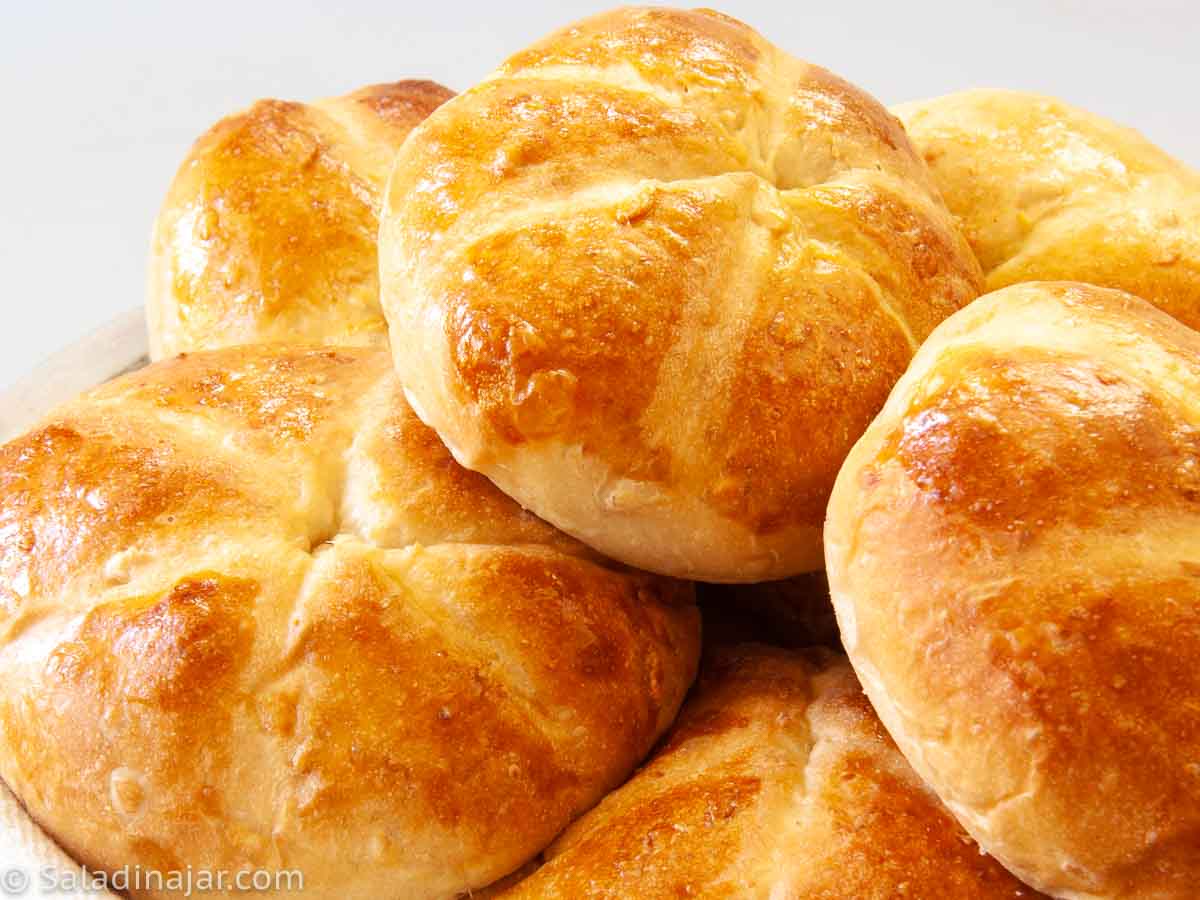
How To Shape Honey Oatmeal Dinner Rolls
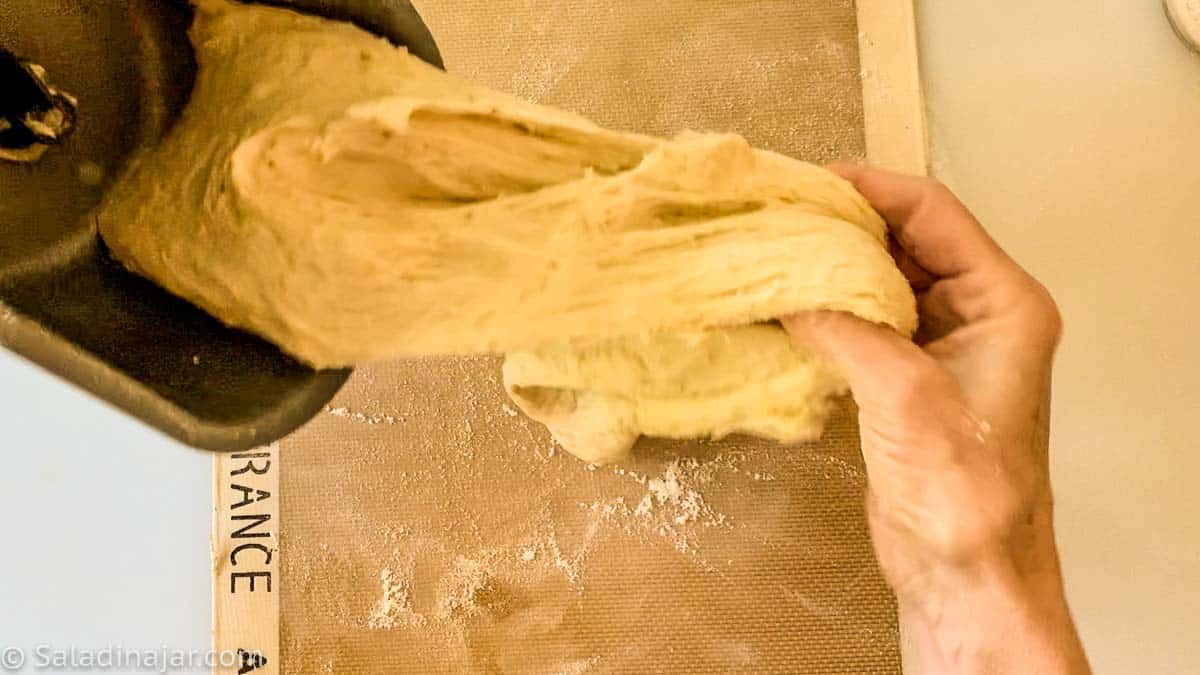
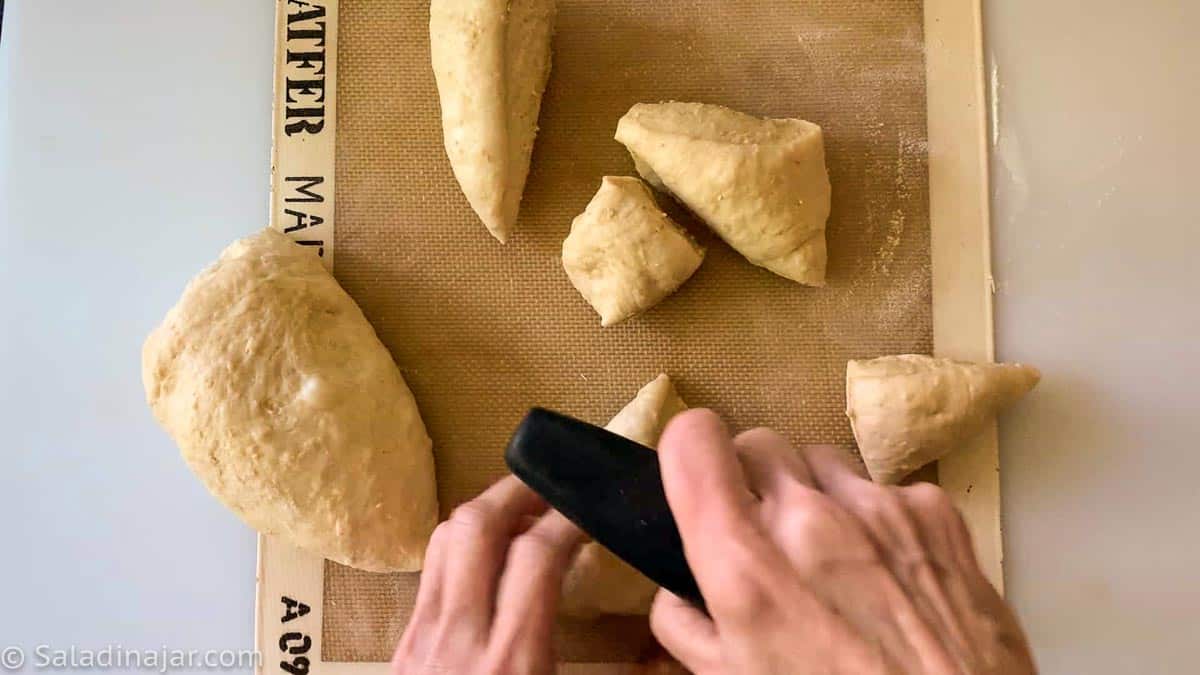
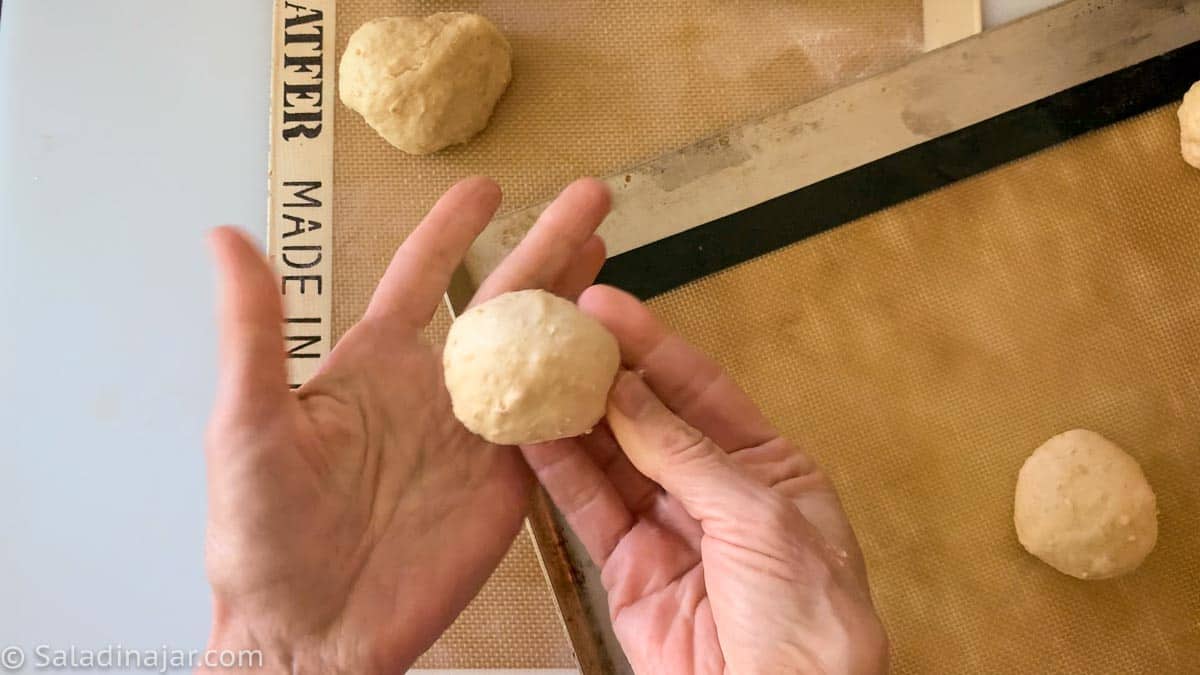
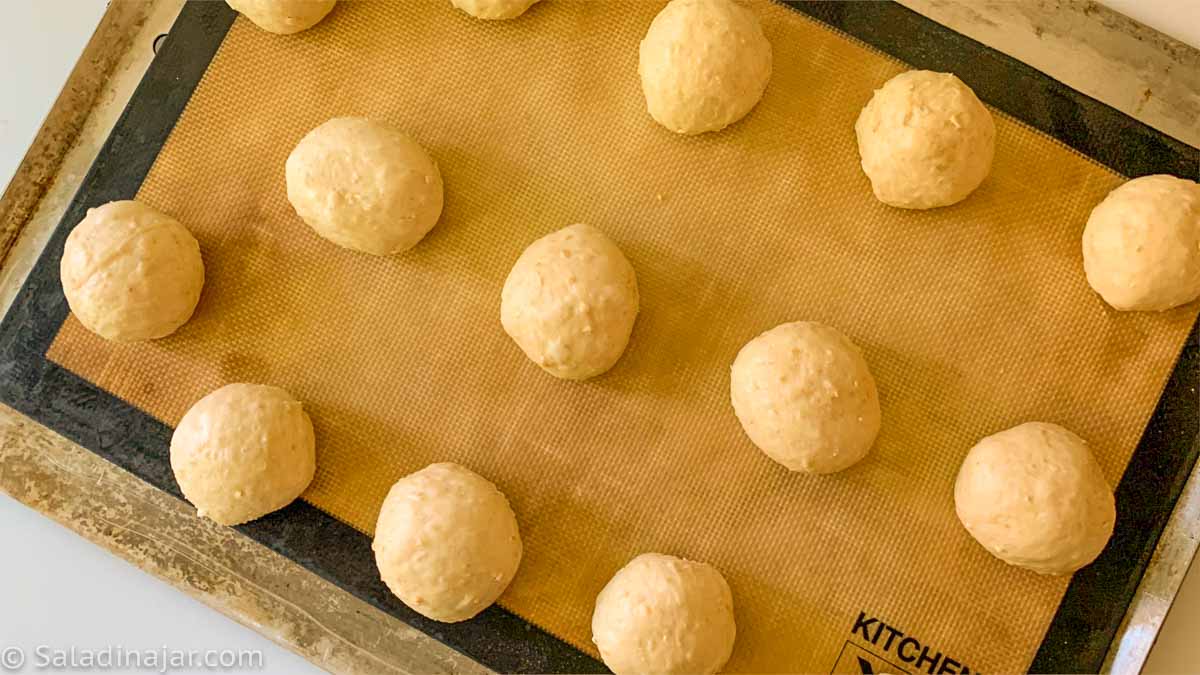
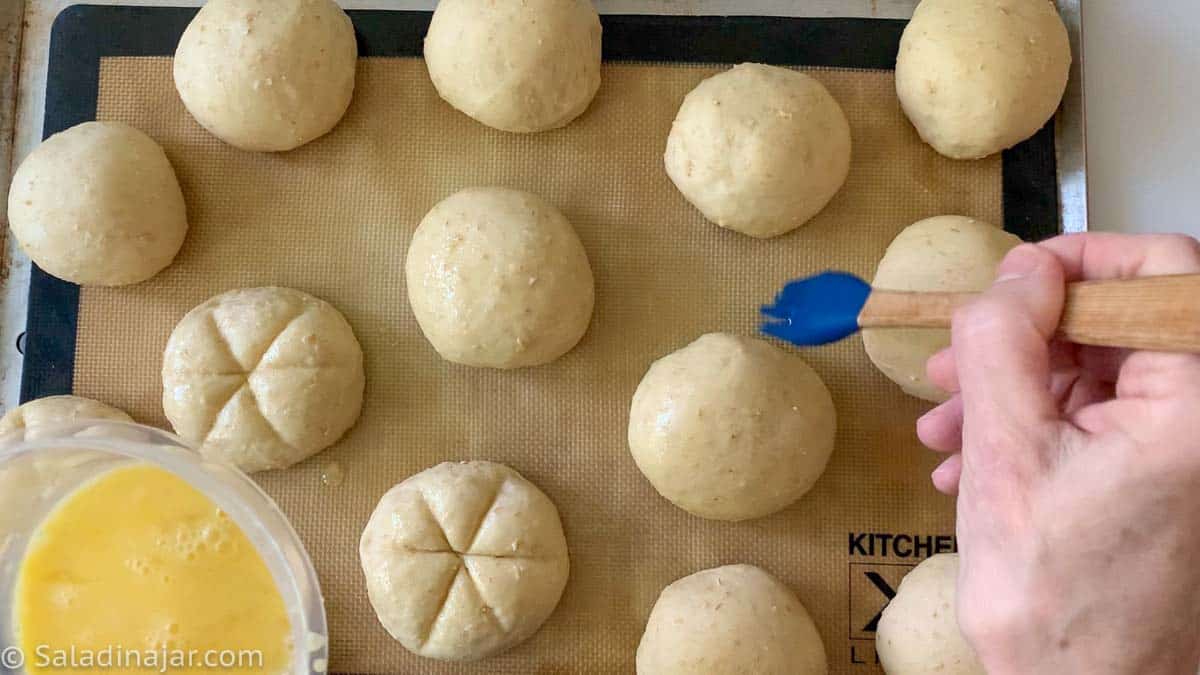
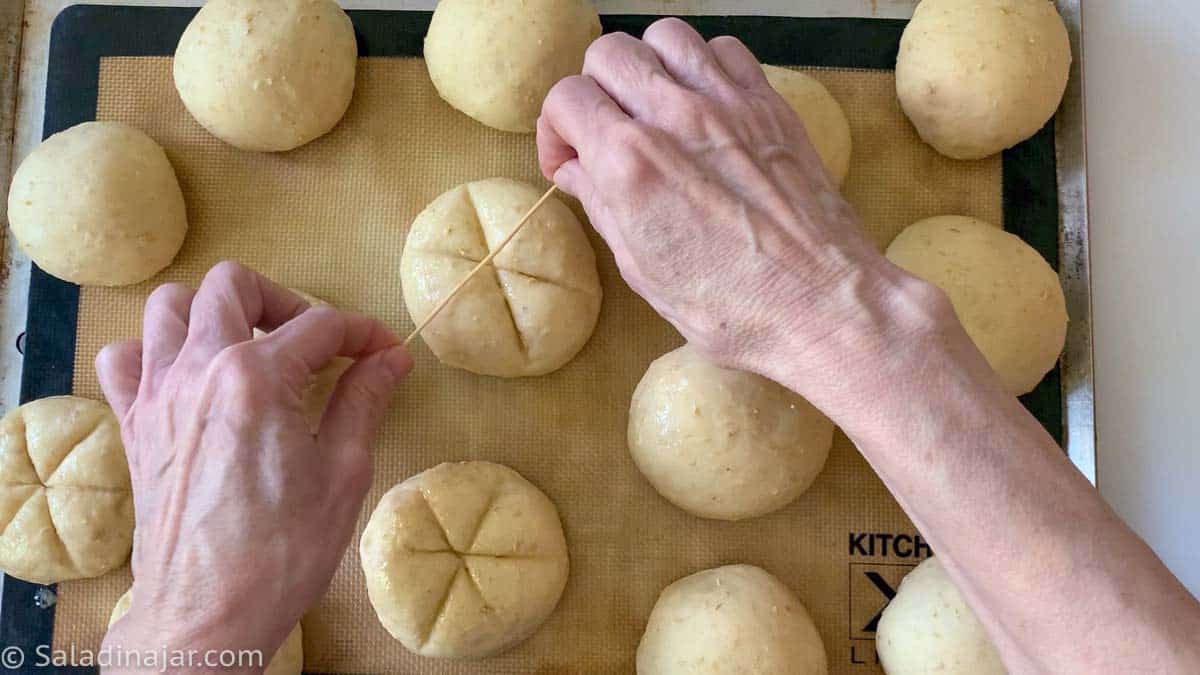
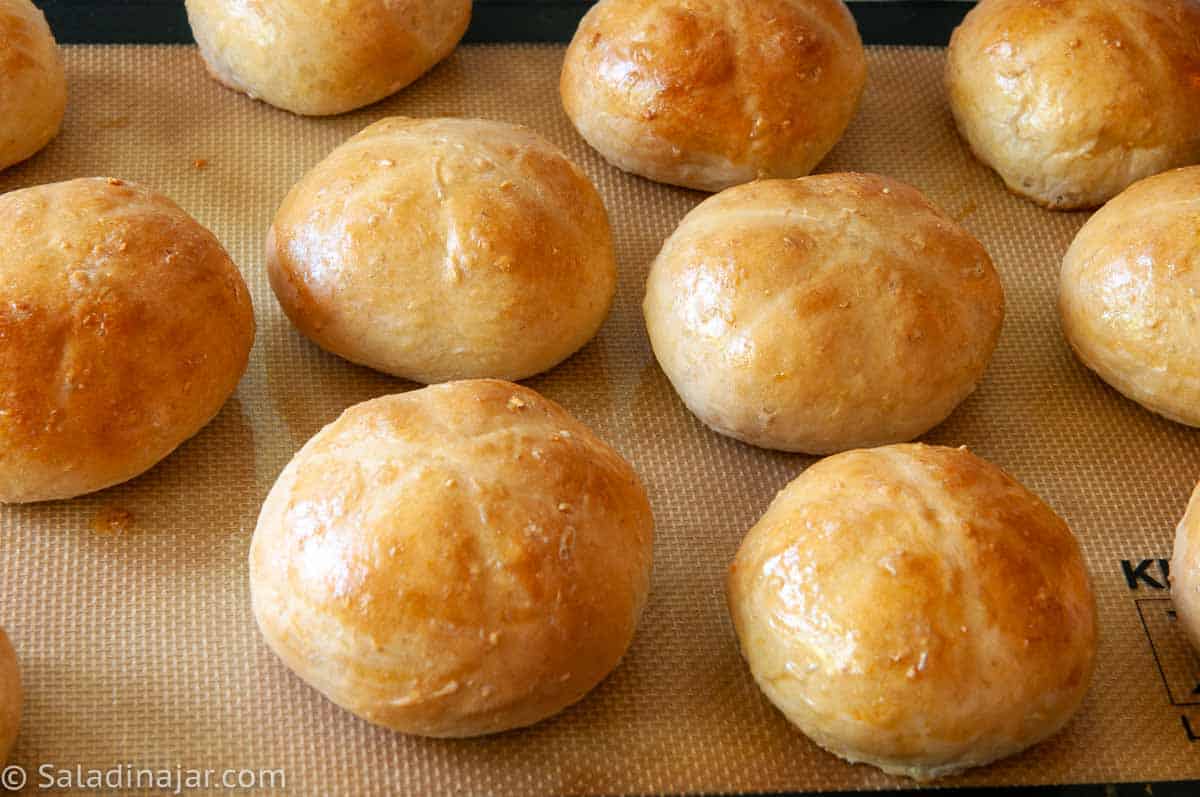
Frequently Asked Questions About Oat Rolls
Because they have no preservatives, these rolls will only stay fresh for 2-3 days. However, oatmeal has an antioxidant that helps.
“Breads containing oats stay fresher longer due to the natural antioxidant found in the oat’s endosperm.”—The Bread Machine Magic Book of Helpful Hints (paid link)
A bread box is good. A plastic bag is better than a paper bag.
Toast your oatmeal before adding it to the other ingredients in the bread machine pan.
Quick oatmeal will dissolve faster than old-fashioned oats. I avoid it because I don’t want any gooey clumps of oatmeal in my rolls.
The room’s ambient temperature, where the bread rises, makes a huge difference. If your kitchen is quite cool, your dough can take much longer to proof.
Substitutions like the type of flour you use can also affect the time needed.
Parting Thoughts: The picture below is an old one taken when I first published this recipe. I no longer sprinkle the rolls with oatmeal because my grandkids didn’t take to the idea very well. I like it because it’s pretty and gives you a clue about the flavors and what’s to come. Suit yourself.
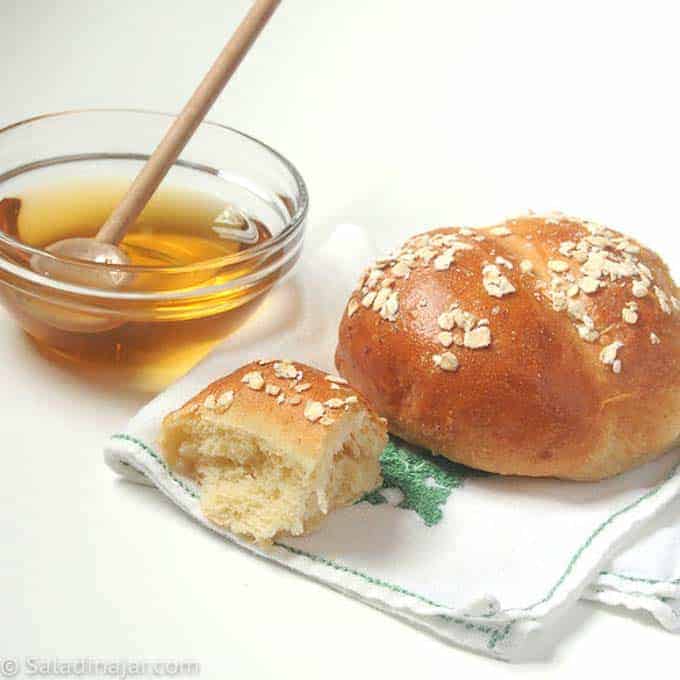
What Would You Like To Read Next?
- Oatmeal-Sunflower Bread Recipe
- Double Chocolate Oatmeal Refrigerator Cookies
- Homemade Brown Sugar-Cinnamon Oatmeal Pop-Tarts
- 6 Bread Machine Secrets You Need To Know
Recipe Help at Your Fingertips: For questions or suggestions, email Paula at saladinajar.com. If you need help, I’m happy to troubleshoot via email (faster than leaving a comment). Attach pictures and as many details as possible for the best advice.
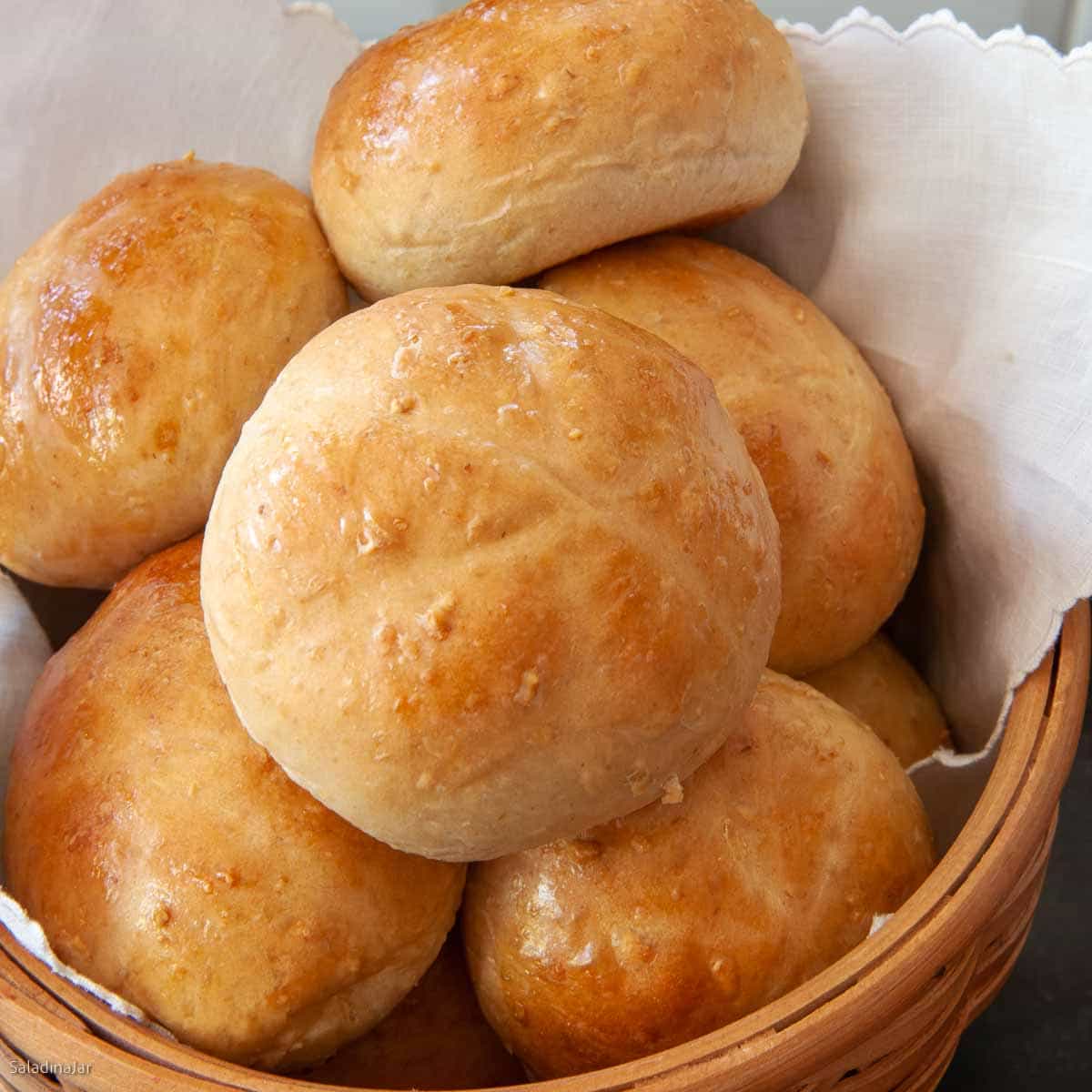
Honey Oatmeal Rolls (Bread Machine Recipe)
Rate this recipe
(5 stars if you loved it)
Video
Ingredients
- ¾ cup (170 g) milk cool
- ¼ cup (84 g) honey
- 1 large (50 g) egg
- 1 teaspoon salt
- ¼ cup (57 g) unsalted butter
- ⅔ cup (60 g) old-fashioned oats
- 2 ½ cups (300 g) bread flour
- 1 tablespoon vital wheat gluten optional (see note in the post) (9 gr)
- 2 ¼ teaspoons bread-machine yeast or instant yeast
Glaze:
- 1 (50 g) egg
- 1 tablespoon water
Instructions
- Add all dough ingredients to the bread machine pan in the order listed: 3/4 cup (170 g) milk, 1/4 cup (84 g) honey, 1 large (50 g) egg, 1 teaspoon salt, 1/4 cup (57 g) unsalted butter, 2/3 cup (60 g) old-fashioned oats, 2 1/2 cups (300 g) bread flour, 1 tablespoon vital wheat gluten, and 2 1/4 teaspoons (2 ¼ teaspoons) bread-machine yeast or instant yeast,
- Set your bread maker on the DOUGH cycle and start.
- Check the dough at least twice by lifting the lid to take a peek. The first time, look immediately after the machine starts to ensure the paddles are engaged correctly. Look again 15 minutes into the DOUGH cycle to assess the consistency of the dough. For most recipes, The dough should stick to the side, then pull away cleanly.If your dough is too wet, add flour one tablespoon at a time. Conversely, if the dough is too dry, add one tablespoon of liquid at a time until the dough looks just right. Read more about this surprising secret to success with a bread machine here.
- When the dough cycle completes, turn the dough out onto a floured surface. Divide dough in half. Divide each half into 7 rolls for a total of 14. Use your fingers to make each portion into a smooth ball.
- Place dough balls onto a greased cookie sheet. Allow to rise until almost double.
- Preheat the oven to 350˚F (180˚C) about 15 minutes before you anticipate the rolls will be ready to bake. Use the dull side of a thin knife or a wooden skewer to gently press down 1-3 times in the middle of each roll to make a decorative pattern.
Glaze:
- Whisk 1 (50 g) egg and 1 tablespoon water together for glaze and gently coat rolls.
- Bake at 350˚F (180˚C) for 10-13 minutes. Allow to cool on a rack for a few minutes or eat as soon as they don’t burn your fingers.
Notes
- To make this recipe in a heavy-duty stand mixer: Add ingredients to the bowl in the same order. Turn on LOW to mix until all ingredients are moistened. Then, using a dough hook, turn the speed to 2 or 3. Continue beating/kneading until dough becomes smooth and elastic (about 5-10 minutes). Cover and allow to rise in a warm place. Deflate dough gently and shape as indicated in the recipe.
- If making by hand: Combine all ingredients into a shaggy ball in a large bowl. Turn dough out onto a floured surface. Knead with your hands until the dough becomes smooth and elastic. Kneading will likely take 10-20 minutes, depending on your experience. Place the dough ball into a greased bowl. Cover and allow to rise until double. Deflate the dough gently and shape as indicated in the recipe.
- Please note: If you only have active dry yeast, use 1/4 teaspoon more than called for in the recipe. It no longer needs to be dissolved first, but you can if you prefer.
Equipment
Nutrition
All images and text ©️ Paula Rhodes for Salad in a Jar.com

Paula Rhodes, owner
As a retired home economist, I created Saladinajar.com to share my belief that you don’t have to be a chef to find joy in creating homemade food worth sharing. Bread machines (used in an unconventional way), homemade yogurt, and quick microwave recipes are my specialty.